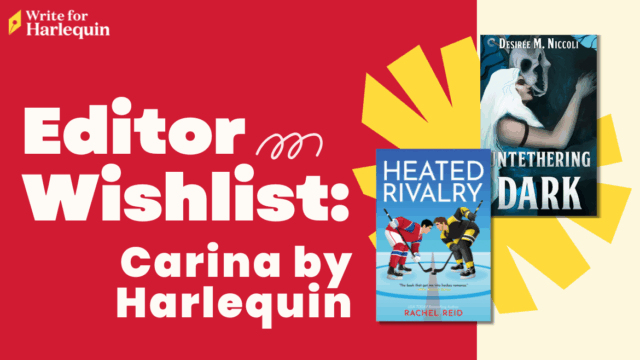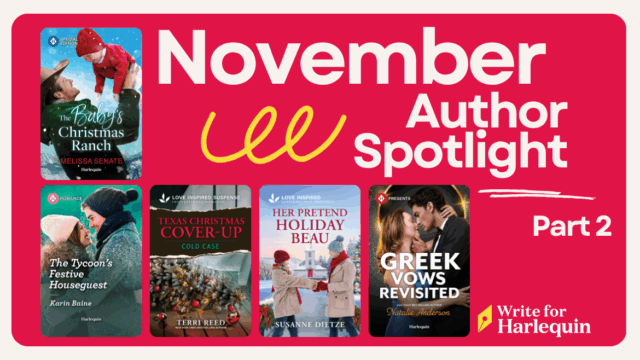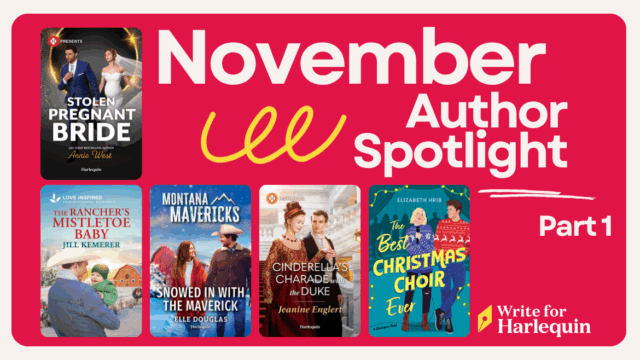
Subplots are a great way to strengthen your romance novel. Particularly if you’re writing for one of Harlequin’s longer category romances. We often see subplots in lines like Harlequin Historical, Harlequin Romantic Suspense, Harlequin Heartwarming, and more. These longer stories give you room to add a secondary story—one that can do a lot of heavy lifting!
Subplots can strengthen a story in a number of ways. They can:
- Tell us more about the leading couple through interactions with secondary characters, or through your leading couple’s reaction to a certain situation. We can watch them grow!
- Inform us of setting and the characters’ world. A subplot about a local festival, for example, might show us the colorful community the characters live in.
- Set the tone or create a mood. Add comedy with a feel-good subplot featuring pets or toddlers; or intensify the emotion through a character’s relationship with a long-lost relative.
- Help with pacing! Subplots may help speed the story up with extra action or slow a fast-paced story down when needed.
If you’re submitting to one of Harlequin’s longer category romances, there’s plenty of room to add a secondary story that can help drive the romance forward. We asked the editors of some of Harlequin’s longer category romances to share on subplots, including what works in their series!
Katie Gowrie, Editorial Assistant for Harlequin Heartwarming, says:
“Subplots can enrich a story and the world it takes place in. In a Heartwarming, subplots aren’t filler! They help drive the story forward and develop the characters, conflict, and romance. In Heartwarming, subplots can be based around a number things: familial relationships (the hero connecting with his teen daughter, the heroine’s relationship with her aunt, etc.); secondary romances between other characters in the cast (the leading couple’s friends, or a second-chance romance between an older couple); even a light mystery element is fun (finding a lost family heirloom, for example). These can all work to tell us more about your couple and their lives as they fall for each other.”
Carly Silver, Associate Editor for Harlequin Romantic Suspense, says:
“I find the best subplots tie into the hero and heroine’s journey and help further their emotional growth. For example, if the hero is protecting the heroine from a would-be killer and they must live together for safety, perhaps a subplot could be them adjusting to living together, the way their relationship progresses in domestic terms as it also does in a romantic sense.”
The Harlequin Historical editorial team says:
“In Historical Romance, with a 70,000-word count, there is some room to develop sub plots—but they must enable you to keep the focus firmly on the hero and heroine and reveal the characters’ goals and deeper emotional conflicts and therefore drive the emotional development of your romance. The subplots can be anything from warring clans in Highlander and Viking stories, to a mystery, a road trip—even helping a secondary character or trying to prevent a match in Regency or Victorian time periods. The subplots that don’t work so well are ones which separate your hero and heroine or overtake the central romance.”
However you choose to work a subplot into your story, remember these tips from our editors. Experiment with finding the right balance—use your subplot to tell us about your leading couple and their journey rather than take away from it. But don’t feel limited by what we think; try it yourself and see what works for you! We love getting surprised by a story with an exciting, sweet, or suspenseful subplot that further enhances a great romance!
What are your tips on crafting subplots? Share with us in the comments below!




